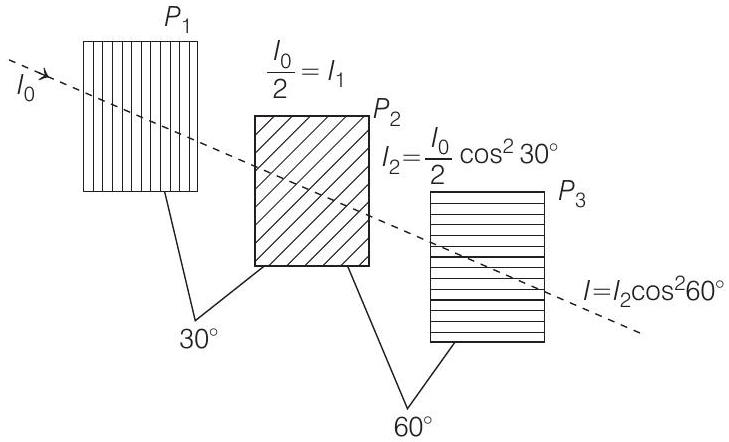Optics 6 Question 1
1. A system of three polarisers
(2019 Main, 12 April II)
(a) 5.33
(b) 16.00
(c) 10.67
(d) 1.80
Show Answer
Solution:

When unpolarised light pass through polaroid
where,
Now, this transmitted light is polarised and it pass through polariser
As angle of pass axis of

When this light pass through third polariser
So, ratio
2 As we know,
Path difference introduced by thin film,

and if fringe pattern shifts by one frings width, then path difference,
So, from Eqs. (i) and (ii), we get
Alternate Solution
Path difference introduced by the thin film of thickness
Fringe width of one fringe is given by
Given that






